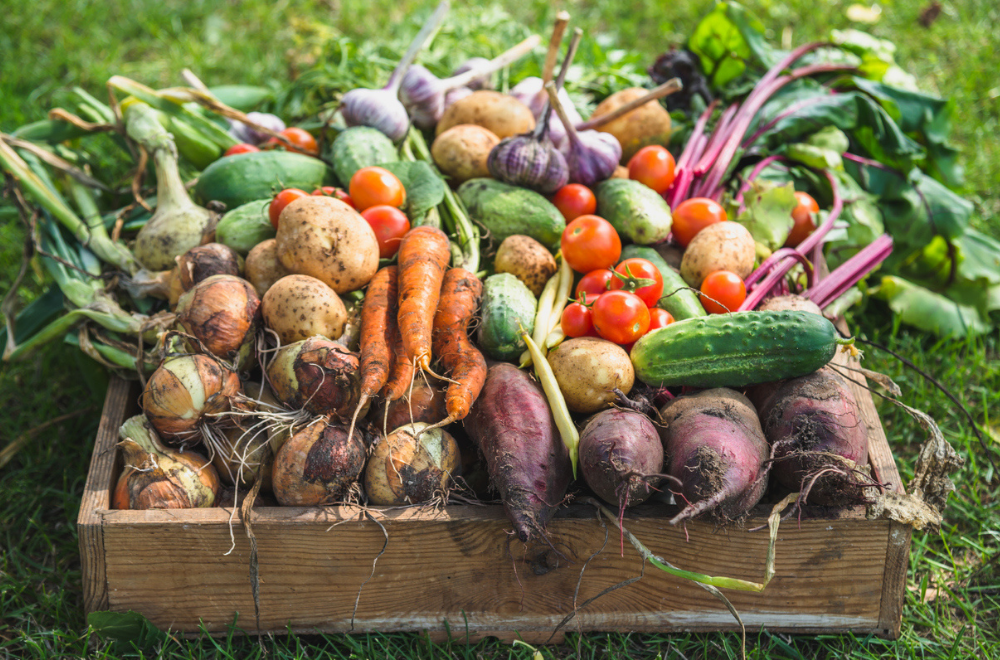
Written by Mari Somerville, Accredited Practising Dietitian and PhD candidate with Griffith University’s Healthy Primary Care team. Mari’s research interests include chronic disease prevention, health service delivery and global health nutrition. Her doctoral work focuses on the nutrition care provided to patients with prediabetes in Australian primary care settings. Mari’s goal is that her research will build upon current type 2 diabetes prevention activities and lead to improved nutrition support services and quality of life for people with prediabetes.
The 2019 EAT Lancet commission reported that to meet our global sustainable and healthy eating goals by 2050, we need to ‘double our fruit, vegetable, nut and legume intake and reduce our meat and sugar consumption by 50%’. In other words, following a more plant-based diet is beneficial for both human and planetary health. There are many small changes you can make each day to support your health and a sustainable food future for all.
Here are five broad areas to start eating sustainably today:
1. Buy local
Buying local helps the environment, while also putting more money in your community. Foods shipped from elsewhere negatively impact the environment as they require fuel and electricity for transportation and storage. Locally sourced food travels less distance from farm to plate, and is usually picked at peak freshness – meaning you get a quality product. Support your local food producers by shopping at Farmers Markets and buying products with a ‘Made in Australia’ logo.

2. Eat foods in season
When you buy local, you are often indirectly purchasing foods in season. Eating seasonally, means you are consuming foods that were harvested in their typical growing season. However, you might notice you can often buy fresh produce year-round, regardless of when it was grown. Becoming more aware of growing seasons means you can make purchasing decisions depending on the time of year. This will reduce excess greenhouse gas emissions and ensure you consume quality products. You can always purchase products in-season and freeze or store them for use later. For example, go strawberry picking in May to October in Queensland, and freeze the extras for smoothies throughout the summer months.
3. Support sustainable fishing practices
Fish and seafood are nutritious and delicious, but certain fishing practices can be harmful to the surrounding environment and animal population. Just like produce, purchase fish and seafood locally and when it is in-season. However, even certain Australian-caught fish are facing extinction and should be limited (eg. Prawns, albacore tuna, snapper). Smaller fish like sardines have less environmental impact but have similar health benefits as larger fish. The GoodFish guide provides an easy-to-use overview of certain fish and seafood products to limit or consume. A new and sustainable sea-based product is seaweed; it can be eaten or used in farming to remove CO2 from the air. This is a growing industry as demand for sustainable food products increases. Try experimenting with Australian seaweed products as a sustainable seafood choice!

4. Reduce, re-use, recycle…food
The classic environmentally friendly saying ‘reduce, reuse, recycle’ also applies to food. You can…
Reduce food waste. Plan and buy the amount of food you need, use up leftovers and wilting produce and eat what you order at a restaurant. You can also reduce food packaging by purchasing products in bulk with reusable containers and grocery bags.
Re-use food & food containers. Composting is an easy way to dispose of your food scraps (produce, egg shells, bread – anything except meat). Add some worms to your compost to speed up the process, and use the resulting soil to plant some food of your own!
Recycle food containers. Another way to be more environmentally friendly with your food choices is to recycle your food containers whenever possible. Make sure you wash out containers and recycle in appropriate bins. Now in Australia, you can get money back from certain bottles at your local recycling depot.
5. Limit your consumption of meat and animal products
While meat and dairy provide important nutrients, they can have a negative impact on our environment. This is partly due to farming practices used to produce these foods, and due to considerable amount of methane gas produced by large animals. Swapping some animal products for plant-based alternatives can have large-scale, positive impacts on our environment. You don’t need to become a vegan or vegetarian to reap the benefits; The ‘Meatless Monday’ trend is one way to meet a weekly goal of reducing meat intake. Another approach is to adopt a ‘Flexitarian’ style eating pattern, which means you eat mostly plant-based foods, but have meat on occasion.
Remember, you should always discuss any changes to your diet with a dietitian to ensure you are getting proper nutrition and are eating what is right for you!
As you can see, many sustainable eating practices are also in-line with healthy eating; so what is good for you, is often also good for the planet!
If you’re interested in understanding how the food we eat affects our lives and our environment, a degree in nutrition and dietetics might be for you. If you’re interested in furthering your career with research, find out more about Griffith’s Higher Degree by Research.



